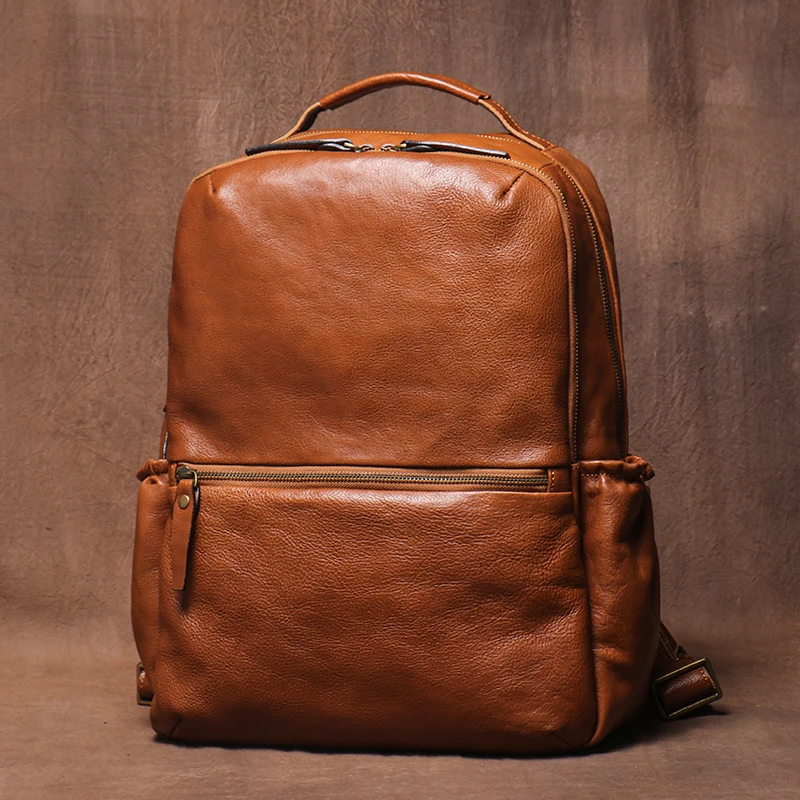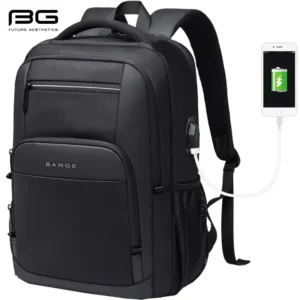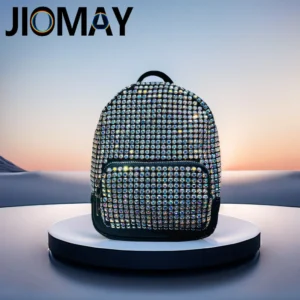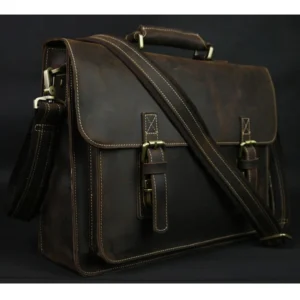A Brief History of Vintage Leather Backpacks
When we talk about “vintage” leather backpacks, we’re generally referring to items that are at least 20 years old or designs that draw inspiration from past eras. These timeless accessories have maintained their popularity not just because of nostalgic appeal, but because they offer something increasingly rare in today’s world: genuine durability and character that improves with age.
The journey of leather backpacks from purely functional items to fashion statements spans centuries, evolving from basic carrying tools to sophisticated accessories that blend form and function. What makes these items special is the material itself – quality leather develops a natural patina over time, creating a unique finish that tells the story of its use and care.
Today’s growing interest in vintage leather backpacks reflects a broader cultural shift away from disposable fashion toward investment pieces that stand the test of time. The sustainable nature of well-made leather goods appeals to modern consumers who recognize that properly maintained leather actually looks better with age, developing rich color variations and a supple texture that can’t be replicated in new items.
Understanding proper leather conditioning and waterproofing techniques has become essential knowledge for owners who appreciate how these classic designs continue to influence contemporary backpack styles, proving that good design truly is timeless.
Early Origins: Functional Foundations of Leather Carrying
Long before leather backpacks became fashion statements, they served purely practical purposes. Ancient civilizations utilized animal hides to create simple carrying pouches for hunting, gathering, and nomadic travel. These rudimentary designs prioritized function above all else – they needed to be durable enough to withstand harsh conditions and spacious enough to transport essential items.
Early leather carrying solutions were characterized by:
- Simplicity – often a single compartment with minimal ornamentation
- Durability – made to withstand years of heavy use in all weather conditions
- Basic construction – hand-stitched with natural materials like sinew or plant fibers
- Practical design – typically featuring adjustable straps and secure closures
Archaeological finds have revealed leather pouches and satchels dating back thousands of years, showing how humans have long relied on animal hides for portable storage. Medieval travelers used leather sacks slung across the back for journeys, while hunters and trappers developed specialized systems for carrying tools and game.
The construction methods were straightforward but effective – thick hides were cut, shaped, and joined using simple stitching techniques. These foundation designs established the basic principles that would evolve into more sophisticated leather rucksacks over centuries, proving that necessity truly is the mother of invention when it comes to practical carrying solutions.
Military Influence: The Birth of Modern Backpack Design (1900s-1940s)
The modern leather backpack as we know it took definitive shape during the early to mid-20th century through military innovation. World Wars I and II created unprecedented demand for durable, standardized equipment that could withstand extreme conditions while allowing soldiers to carry heavy loads efficiently.
Military rucksacks from this era established several design standards that continue to influence backpacks today. Thick, vegetable-tanned leather was the material of choice, selected for its incredible durability and water-resistant properties. Engineers focused on structural improvements like reinforced bottoms to prevent sagging, improved frame supports for weight distribution, and wider straps to prevent cutting into shoulders during long marches.
These military-issue packs were defined by their utilitarian design – form followed function with minimal decorative elements. Hardware was chosen for reliability rather than aesthetics, with brass buckles and steel rivets placed at stress points to prevent tearing. The standardized designs featured precise specifications for capacity, ensuring consistent performance in the field.
Expedition equipment from this period further refined backpack design, as explorers required gear that could withstand extreme environments while providing organized storage for crucial supplies. Many vintage and modern leather backpack features can be traced directly to these military origins, including:
- Y-strap closure systems for secure main compartment access
- External attachment points for additional gear
- Padded back panels for improved comfort during extended wear
- Reinforced stitching patterns at weight-bearing junctions
These innovations laid the groundwork for all backpack designs that followed, establishing standards for durability and functionality that transcend fashion trends.
Post-War Recreation & Counter-Culture Impact (1950s-1960s)
The post-war boom in outdoor recreation transformed leather backpacks from military equipment to civilian gear. As hiking and camping gained popularity as leisure activities, manufacturers adapted military designs for recreational use. These civilian versions maintained the ruggedness of their military predecessors but incorporated subtle changes to suit less demanding environments – slightly lighter materials, more comfortable straps, and more accessible closures.
The traditional “rucksack” style began appearing in everyday settings, worn by college students and outdoor enthusiasts who appreciated its practical design. These transitional designs maintained the boxy, structured shape of military packs but often featured softer leathers and more varied color options.
The cultural shifts of the late 1950s and early 1960s brought leather backpacks into new territory as symbols of nonconformity and personal expression. The Beatnik movement and early hippie culture adopted these practical bags as alternatives to conventional briefcases and suitcases, representing a rejection of mainstream consumer culture. This period marked a crucial transition in how these items were perceived – no longer just tools but statements about identity and values.
The ultimate guide to conditioning a leather backpack became essential knowledge during this era as users sought to maintain their packs for years of continuous use. Notable adaptations during this period included:
- Introduction of softer, more pliable leathers for everyday comfort
- More varied color options beyond standard military brown and black
- Simplified closure systems for convenience
- Personalized touches like patches, pins, and hand-painted designs
These developments represent the crucial bridge between purely utilitarian military designs and the fashion-forward styles that would emerge in subsequent decades.
Fashion Integration & Bohemian Influence (1970s-1980s)
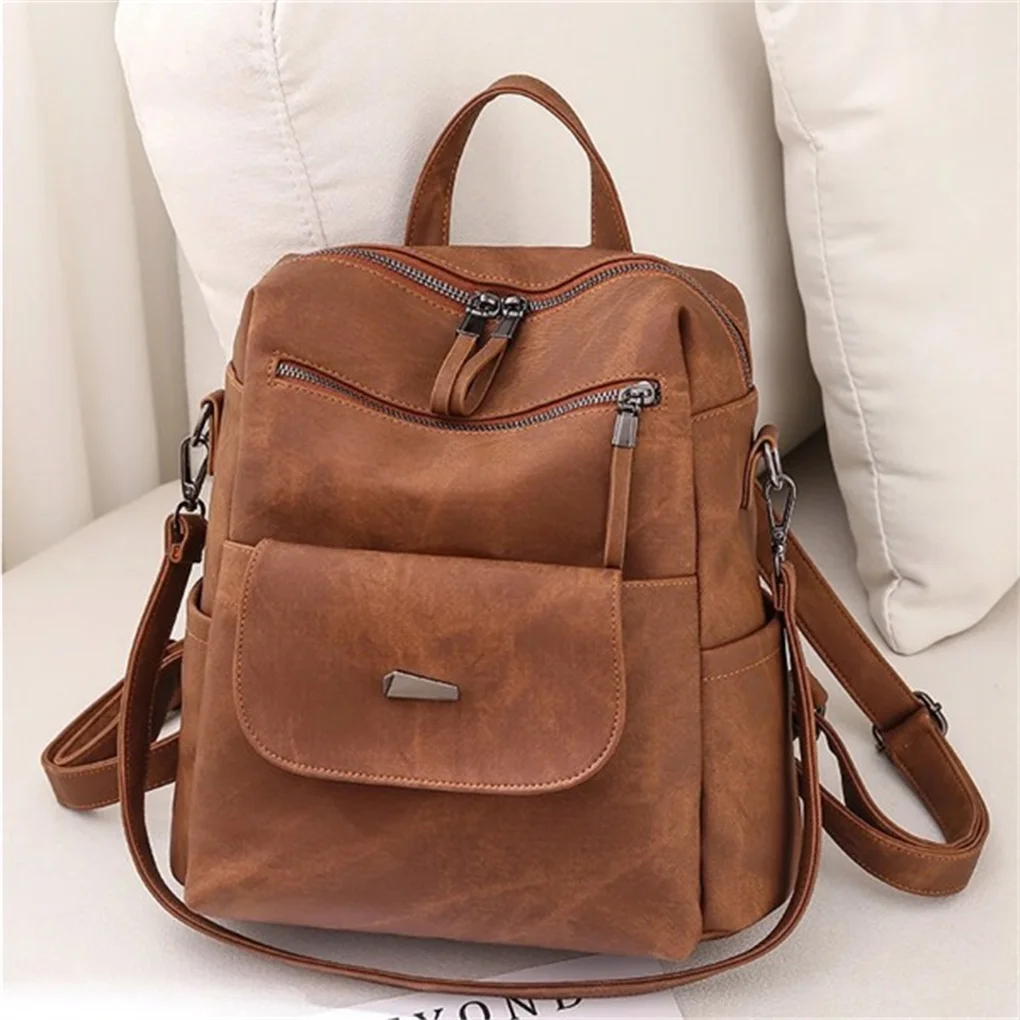
The 1970s and early 1980s witnessed leather backpacks fully entering the fashion mainstream, transformed by bohemian and folk-inspired design elements. What had once been strictly functional items became canvases for creative expression, incorporating decorative features like:
- Hand-tooled leather with intricate patterns
- Fringe details along seams and flaps
- Braided leather accents and trim
- Natural elements like bone or wood toggles
- Embossed or stamped geometric and nature-inspired motifs
Leather craftsmanship evolved to include softer, more supple varieties that draped elegantly on the body, contrasting with the rigid military styles of previous decades. Manufacturers began experimenting with vegetable dyes to create rich earth tones beyond the traditional brown and black, with rust, forest green, and deep burgundy becoming popular options.
This era also marked the first significant designer interpretations of backpacks. Luxury brands began introducing high-end versions that maintained the bohemian aesthetic but elevated it with premium materials and craftsmanship. These designer entries cemented the backpack’s transition from purely practical item to fashion accessory.
The vintage leather backpack styling guide became essential for fashion-conscious consumers learning to incorporate these distinctive accessories into their wardrobes. Backpacks were now being paired with flowing dresses and bell-bottom jeans instead of just hiking gear and camping equipment, demonstrating their versatility across different aesthetic traditions.
This period represents a significant turning point when backpacks began to be appreciated not just for what they could carry, but for how they looked while doing so – the true hallmark of a fashion accessory.
Minimalist Evolution & Urban Adaptation (1990s-Early 2000s)
The 1990s marked a dramatic shift toward sleeker, more minimalist leather backpack designs. The bulky, ornate bohemian styles gave way to streamlined silhouettes with cleaner lines and less decorative elements. This evolution coincided with growing urban commuter culture and the rise of personal computing, creating demand for bags that could transition seamlessly between educational, professional, and casual settings.
Key innovations during this period included:
- Introduction of dedicated laptop compartments with protective padding
- Slimmer profiles designed for navigating crowded urban environments
- Simplified exterior designs with hidden pockets rather than external pouches
- Magnetic closures and zippers replacing traditional buckles for quick access
- Ergonomically designed straps for daily commuting comfort
The “worn-in” aesthetic became increasingly desirable, with distressed or weathered leather finishes created deliberately during manufacturing rather than developed naturally over time. This allowed consumers to purchase backpacks with the character of vintage pieces but the functionality of modern designs.
As personal technology became essential to daily life, leather laptop backpacks emerged as a distinct category. These specialized designs featured protective compartments for electronics while maintaining the classic appeal of traditional leather. The rise of coffee shop culture and flexible workspaces further drove demand for sophisticated backpacks that could serve as mobile offices.
This era represents the modernization of vintage aesthetics – preserving the timeless appeal of leather while adapting to contemporary needs. The result was a new generation of backpacks that paid homage to their utilitarian ancestry while embracing the digital age.
Key Design Elements Through the Decades
| Era | Straps | Closures | Compartments | Hardware | Silhouette |
|---|---|---|---|---|---|
| Early 1900s | Narrow, basic | Simple ties, basic buckles | Single main compartment | Minimal, functional | Rectangular, rigid |
| 1940s Military | Wider, reinforced | Metal buckles, canvas straps | Main plus external pockets | Brass, steel rivets | Structured, boxy |
| 1950s-60s | Padded, adjustable | Leather straps, buckles | Main plus organized pockets | Mixed metals, sturdier | Softened rectangle |
| 1970s-80s | Decorative, comfortable | Drawstring, decorative buckles | Multiple specialized pockets | Ornamental, diverse | Relaxed, flowing |
| 1990s-2000s | Ergonomic, padded | Magnetic, zippers, hidden | Tech-specific organization | Minimalist, concealed | Streamlined, urban |
| Modern Revival | Comfort-focused | Mixed traditional/modern | Specialized tech + retro styling | Vintage-inspired, quality | Hybrid classic/modern |
The evolution of backpack straps demonstrates how functionality drove innovation. Early basic straps often caused discomfort during extended wear, leading to military improvements with wider designs distributing weight more effectively. By the 1970s, padding had become standard, with modern designs featuring ergonomic contours and breathable materials while maintaining leather exteriors.
Closure systems evolved from simple ties to sophisticated combinations of traditional and modern elements. While early backpacks relied on basic buckles or drawstrings, modern vintage-inspired designs often incorporate hidden magnetic closures behind traditional-looking buckles, providing the security and convenience of contemporary engineering with the aesthetic appeal of vintage design.
Compartment organization reflects changing consumer needs over time. Single-compartment designs gave way to increasingly specialized storage solutions, with modern vintage-style backpacks offering dedicated protection for laptops and tablets alongside traditional pocket layouts. This evolution represents how manufacturers have balanced honoring heritage designs while acknowledging contemporary requirements.
The DIY leather care for travel backpacks has likewise evolved to address the specific needs of different design elements from various eras, ensuring these pieces can be maintained regardless of their age or construction style.
Leather Types and Craftsmanship Evolution
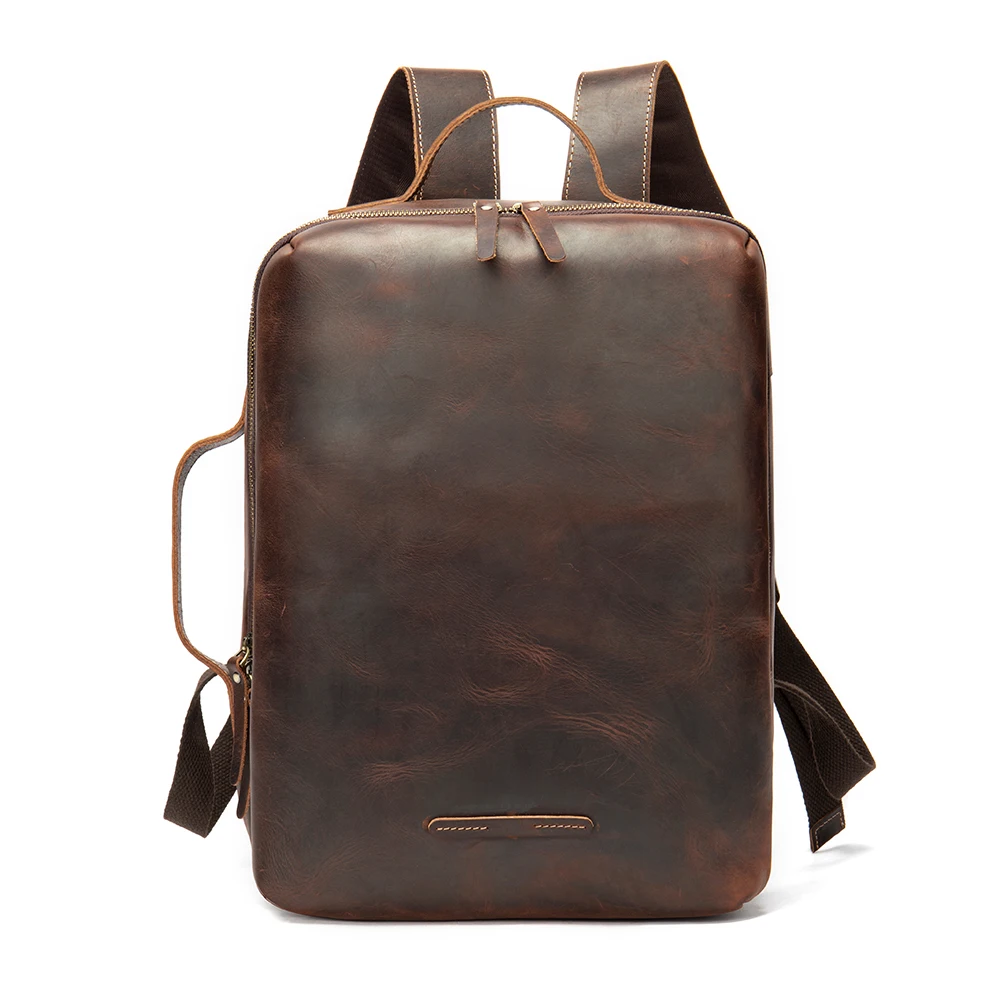
The evolution of leather backpacks is inextricably linked to advancements in leather processing and craftsmanship techniques. Early backpacks utilized thick, vegetable-tanned leather valued for its exceptional durability rather than softness or flexibility. These dense, rigid leathers could withstand extreme conditions but required significant breaking in before conforming comfortably to the body.
The mid-20th century saw the increased use of chrome tanning, which produced softer, more immediately pliable leathers that maintained reasonable durability. This innovation allowed for more complex designs with curved shapes and folded details that would have been impossible with the stiffer vegetable-tanned varieties.
Popular leather finishes that defined different eras include:
- Pull-up leather – develops lighter color when stretched or bent, creating natural variations
- Oil-tanned leather – saturated with oils for water resistance and suppleness
- Crazy horse leather – waxed and distressed for an intentionally aged appearance
- Distressed leather – treated to appear naturally worn and vintage
Construction techniques similarly evolved from purely hand-crafted methods to combinations of traditional and mechanical approaches. Early backpacks featured visible, heavy stitching that prioritized strength over aesthetics. Modern vintage-inspired pieces often use a combination of machine stitching for structural elements and hand-finishing for decorative details.
What makes vintage leather particularly special is its capacity to develop character over time. Quality full-grain leather backpacks age unlike any other material, developing a patina that reflects their unique history. The microscopic scratches, oil absorption from handling, sun exposure, and normal wear create a surface that cannot be authentically replicated through artificial means – each vintage piece tells the story of its journey through distinctive markings and color variations.
This natural aging process is why vintage leather backpacks often command premium prices – they possess character and history that new items, regardless of quality, simply cannot offer.
Cultural Impact and Iconic Status
Vintage leather backpacks have transcended their utilitarian origins to become cultural icons representing specific values and lifestyles. Throughout the decades, these versatile accessories have been adopted by diverse groups as symbols of adventure, rebellion, craftsmanship, and sustainability.
In film and media, leather backpacks frequently appear as visual shorthand for certain character types – the intrepid explorer, the academic intellectual, the free-spirited traveler. Iconic cultural figures from Ernest Hemingway to modern celebrities have helped cement their status as symbols of authentic living and practical luxury.
The backpack’s association with education and knowledge has remained consistent throughout its evolution. From mid-century university campuses to modern digital nomads, leather backpacks have symbolized the portable nature of learning and intellectual pursuit. Their presence in academic settings helped elevate them from purely utilitarian objects to markers of sophisticated taste.
Travel culture has similarly embraced vintage leather backpacks as emblems of authentic exploration. Unlike mass-produced synthetic alternatives, a well-worn leather backpack suggests journeys taken and experiences gathered. The visible aging of the leather becomes a record of adventures, with each mark and patina shift telling part of its owner’s story.
Contemporary artists and photographers frequently incorporate brown leather backpacks in their work as symbols of timelessness and authenticity in an increasingly digital and disposable culture. This iconography reinforces the emotional connection many people feel toward these items – they aren’t just carrying solutions but companions through life’s journeys.
The Modern Revival of Vintage Aesthetics
Today’s renewed interest in vintage leather backpack designs reflects broader cultural trends toward authenticity, sustainability, and appreciation of craftsmanship. Modern manufacturers have responded by creating “new vintage” designs that combine classic aesthetics with contemporary functionality.
Current vintage-inspired backpacks typically feature:
- Traditional leather exteriors with modern water-resistant linings
- Classic buckle closures concealing magnetic snaps for convenience
- Heritage styling with integrated tech protection for laptops and tablets
- Handcrafted details alongside precision machine construction
- Sustainable leather sourcing and environmentally responsible production
This revival has been fueled by growing consumer awareness of environmental impacts associated with disposable fashion. Investing in a quality leather backpack that will last decades represents a sustainable alternative to purchasing multiple lower-quality bags that require frequent replacement.
Artisanal and small-batch leather production has experienced significant growth, with craftspeople using traditional techniques to create pieces that honor vintage aesthetics while accommodating modern needs. These makers often emphasize transparency about sourcing and manufacturing processes, appealing to ethically-minded consumers.
The adaptability of vintage designs to modern contexts demonstrates their fundamental soundness. A well-designed men’s leather backpack from decades past often requires only minor modifications to serve contemporary users effectively. This timelessness is what distinguishes truly excellent design from passing trends.
Identifying and Collecting Genuine Vintage Leather Backpacks
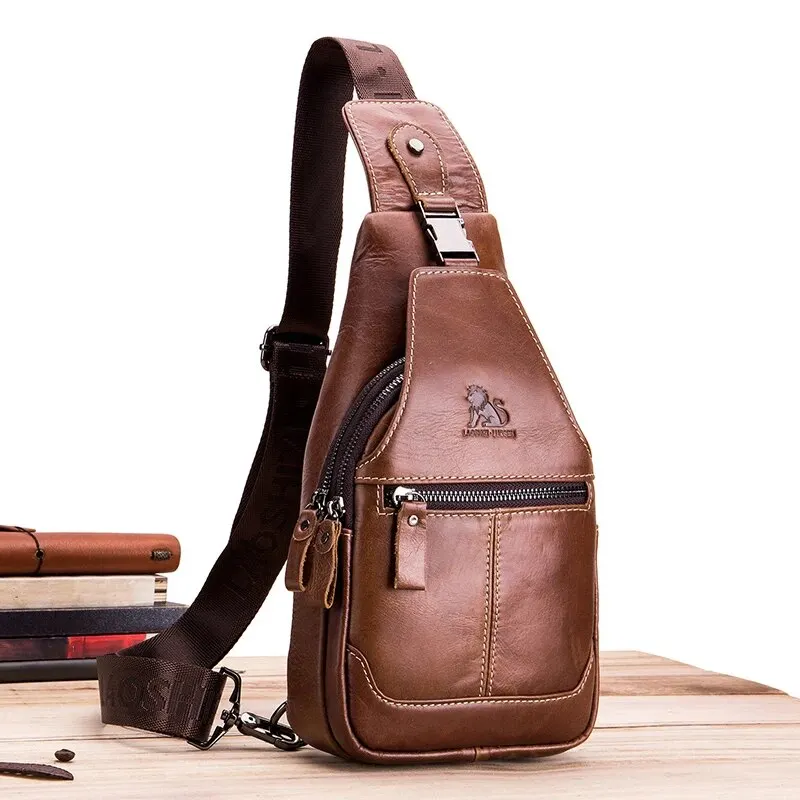
For collectors and enthusiasts, identifying authentic vintage leather backpacks requires attention to specific details that reveal an item’s age, origin, and quality. Valuable vintage pieces typically possess several distinguishing characteristics:
- Hardware consistent with their era (brass buckles from mid-century, particular zipper brands from specific decades)
- Construction techniques appropriate to their purported age (hand-stitching vs. machine work)
- Interior labels or maker’s marks from recognized manufacturers
- Leather quality and patina development consistent with natural aging rather than artificial distressing
- Period-appropriate design elements like distinctive pocket arrangements or strap systems
When evaluating vintage leather goods, condition assessment is crucial but differs from other collectibles. Unlike many items where mint condition commands the highest price, leather backpacks often gain value from appropriate signs of use. A well-maintained backpack with natural patina development may be more desirable than an unused piece that lacks character.
Tips for collectors include:
- Examine stitching patterns closely – machine stitching should be uniform while hand-stitching shows slight variations
- Check interior construction details, which often reveal more about age than exterior elements
- Research specific manufacturers and their characteristic design elements across different periods
- Assess leather quality by examining thickness, flexibility, and grain patterns
- Look for signs of appropriate repairs versus modern alterations
Proper maintenance is essential for preserving vintage leather. Understanding how to apply appropriate waterproofing techniques for leather bags helps protect these historical pieces while maintaining their authenticity. Unlike many collectibles, leather items require active care rather than simple storage to preserve their quality and prevent deterioration.
The Sustainability Appeal of Vintage Leather
The environmental benefits of choosing vintage or vintage-inspired leather goods represent a significant factor in their contemporary popularity. In an era increasingly concerned with sustainability, well-made leather backpacks offer a compelling alternative to disposable fashion with their “buy once, use for decades” proposition.
Quality leather stands apart from synthetic alternatives through its remarkable longevity. While a typical synthetic backpack might last 2-5 years before showing significant wear or failure, a well-constructed leather backpack can serve its owner for decades or even generations when properly maintained. This extended lifespan dramatically reduces the environmental footprint per use compared to items requiring frequent replacement.
What makes leather truly unique is how it improves rather than deteriorates with appropriate use. Unlike many materials that degrade over time, quality leather develops character and softness while maintaining structural integrity. The patina that forms through natural oils, sunlight exposure, and handling creates a finish that manufacturers try (but ultimately fail) to replicate in new products.
The concept of circular fashion finds perfect expression in vintage leather goods. Purchasing pre-owned leather items extends their useful life and prevents additional resource consumption, while investing in new high-quality leather pieces creates future heirlooms rather than future waste. Proper care methods ensure these items remain functional indefinitely, creating a sustainable cycle of use that contrasts sharply with disposable consumer culture.
The benefits of choosing sustainable leather backpacks extend beyond environmental considerations to include economic advantages – quality items that last decades ultimately cost less per use than cheaper alternatives requiring frequent replacement.
Are Vintage Leather Backpacks Still in Style?
Vintage and vintage-inspired leather backpacks remain firmly in style, experiencing a renaissance across various fashion categories. Their enduring appeal transcends trends because they combine practical functionality with aesthetic versatility that complements rather than competes with changing fashion landscapes.
Current fashion has embraced several specific vintage backpack styles:
- Minimalist rucksacks with clean lines and subtle hardware
- Doctor-bag inspired designs with structured shapes and distinctive closures
- Roll-top varieties that combine heritage styling with modern adaptability
- Satchel-backpack hybrids that offer multiple carrying options
What makes vintage leather backpacks particularly relevant today is their versatility across different settings. In professional environments, a well-crafted leather backpack conveys sophistication while providing practical organization for work essentials. In casual contexts, these same bags add a touch of intentional style to everyday outfits.
The neutral color palette and natural materials of vintage leather backpacks allow them to complement diverse wardrobe styles from minimalist to maximalist, traditional to avant-garde. Their ability to span different aesthetic categories makes them practical investments for style-conscious consumers.
Contemporary fashion’s emphasis on individual expression rather than rigid trend adherence has created the perfect environment for vintage pieces to thrive. As consumers increasingly seek items that reflect personal values and unique taste, designer leather backpacks with heritage elements offer distinction in a homogenized marketplace.
14 Inch Leather Laptop Backpack, Brown Leather Backpack, Men's Leather Backpack, Vintage Leather Backpack
Price range: $177.28 through $199.12 Select options This product has multiple variants. The options may be chosen on the product pageDesigner Men's Backpack, Men's Leather Laptop Backpack, Men's Leather Work Backpack
Price range: $158.04 through $160.04 Select options This product has multiple variants. The options may be chosen on the product pageDesigner Mini Backpack, Mini Leather Backpack, Small Leather Sling Backpack, Women's Leather Backpack
Price range: $95.76 through $98.80 Select options This product has multiple variants. The options may be chosen on the product pageDesigner Mini Backpack, Designer Women's Backpack, Mini Leather Backpack, Women's Leather Backpack
Price range: $135.92 through $137.64 Select options This product has multiple variants. The options may be chosen on the product page15 Inch Leather Laptop Backpack, Leather Briefcase Backpack
$332.96 Select options This product has multiple variants. The options may be chosen on the product page17 Inch Leather Laptop Backpack, Men's Leather Travel Backpack, Men's Leather Work Backpack
Price range: $106.28 through $143.88 Select options This product has multiple variants. The options may be chosen on the product page
How to Style a Vintage Leather Backpack Today
Styling a vintage leather backpack effectively means understanding how to integrate heritage design with contemporary fashion contexts. These versatile accessories can enhance various looks when paired thoughtfully.
For professional environments:
* Choose structured, minimalist designs in darker leather tones
* Pair with tailored separates rather than formal suits
* Ensure proportions complement your frame – oversized vintage styles can overwhelm smaller builds
* Consider classic colors like cognac, oxblood, or deep brown that develop rich patina
For casual everyday use:
* Embrace the natural contrast between worn leather and new denim
* Layer with textured pieces like wool sweaters or linen shirts that complement leather’s organic quality
* Don’t be afraid to mix eras – vintage backpacks work well with modern technical fabrics
* Let the backpack be a statement piece by keeping other accessories minimal
For travel and adventure:
* Select designs with secure closures and comfortable straps for all-day wear
* Consider water resistance for unpredictable conditions
* Look for internal organization that accommodates travel essentials
* Choose medium-sized options that work as both day bags and carry-on items
The key to successful styling is balancing vintage character with contemporary needs. A men’s leather laptop backpack can transition seamlessly between coffee shop meetings and weekend explorations when selected with versatility in mind. The natural aging of leather means these pieces evolve with your personal style, developing character that reflects your journey.
What Makes Vintage Leather Better Than Modern Alternatives?
The superior quality of vintage leather goods compared to many modern alternatives stems from fundamental differences in materials, construction techniques, and production philosophy. Traditional leather tanning methods prioritized longevity over immediate profit, resulting in materials designed to improve rather than deteriorate over decades of use.
Vintage leather typically benefits from:
- Slower, more thorough tanning processes that penetrate leather completely rather than just surface treatment
- Full-grain cuts that include the strongest part of the hide rather than corrected or split leather
- Hand-selected materials with natural variations embraced rather than eliminated
- Construction techniques emphasizing durability over manufacturing speed
The aging process creates distinctive characteristics impossible to replicate in new items. Quality leather develops a patina through oxidation, exposure to natural oils from handling, and environmental factors. This creates unique color variations, subtle sheen, and suppleness that synthetic materials or mass-produced leathers cannot achieve.
Perhaps most compelling is the storytelling aspect of vintage leather. The natural marks, subtle wear patterns, and developed character of aged leather create pieces with history and personality. While a new backpack is simply a functional item, a vintage leather backpack becomes a companion with its own narrative – something increasingly valued in our digital age.
For those interested in exploring the distinctive characteristics of historically-inspired designs, retro leather backpack styles offer a window into how traditional construction methods and materials create pieces with unmatched character and longevity.
At Summit Carry, we understand that choosing a leather backpack isn’t just about finding something to carry your belongings – it’s about selecting a piece that will accompany you through life’s adventures, developing character with every journey taken. The timeless appeal of vintage-inspired leather designs continues to resonate because they offer something increasingly rare: authentic quality that improves with age.
